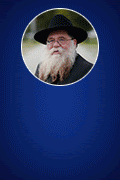A friend had given me the e-mail address of Rabbi Shalom and Dina Greenberg. So on a brisk April morning, I drove to 1277 Beijing Xi Lu, the address of the office of the Jewish Community of Shanghai, where I had been instructed by the rebbetzin to pick up our seder tickets. The small room on the 20th floor of a bleak office building was part makeshift workspace, part storage area filled with wooden shelves overflowing with Hebrew books.
The young Chinese girl in charge of the office welcomed me in broken English, collected $40 per ticket, and gave me invitations to the next evening’s festivities before calling Rabbi Greenberg to tell him I had arrived. When she handed me the phone, I heard an Israeli-accented voice say, “Welcome to Shanghai! I hope you found the office OK. We’re looking forward to having you and your friends join us tomorrow.” He made sure I had directions and invited me to attend erev Passover services at the synagogue down the road.
Shanghai nights: On a work trip to China, a celebrant feels at home
A few years ago, a two-week business trip put me, Lauren Kaufman in China for the first night of Passover. I wanted to attend a seder, find a place where I could celebrate, and meet some Chinese Jews.
A friend had given me the e-mail address of Rabbi Shalom and Dina Greenberg. So on a brisk April morning, I drove to 1277 Beijing Xi Lu, the address of the office of the Jewish Community of Shanghai, where I had been instructed by the rebbetzin to pick up our seder tickets. The small room on the 20th floor of a bleak office building was part makeshift workspace, part storage area filled with wooden shelves overflowing with Hebrew books.
The young Chinese girl in charge of the office welcomed me in broken English, collected $40 per ticket, and gave me invitations to the next evening’s festivities before calling Rabbi Greenberg to tell him I had arrived. When she handed me the phone, I heard an Israeli-accented voice say, “Welcome to Shanghai! I hope you found the office OK. We’re looking forward to having you and your friends join us tomorrow.” He made sure I had directions and invited me to attend erev Passover services at the synagogue down the road.
The next night, my colleagues and I joined the Jewish community of Shanghai at its annual family seder.
When we arrived at 6 p.m., Chinese soldiers were guarding Ohel Rachel Synagogue in Shanghai the entrance of the 80+-year-old Ohel Rachel Synagogue, which was set back from Shan Xi Bei Road behind a gate. I later found out that the soldiers were there to make sure no Chinese nationals, only foreign passport holders and their families, entered the large stone-faced temple; proselytizing in China is illegal, and Judaism is not a recognized religion. I anticipated meeting Chinese Jews and children of inter-cultural mixes, but to my dismay, about 50 casually dressed Western expatriates were in attendance.
The Republic of China’s communist government, established in 1949, recognizes only five religions: Buddhism, Taoism, Confucianism, Christianity, and Islam. Today, the 1,000-member strong Jewish community, comprising international professionals, businessmen, and entrepreneurs from around the globe, is under government watch to make sure its members do not “disturb social stability.” The Greenbergs came to Shanghai in 1998 as Chabad-Lubavitch emissaries. The rabbi admitted that without the Chinese authorities’ recognition of the community, “it is very difficult to operate here….” Until recently, the community was not able to rent office space, open a gift shop, or operate a kosher food store, he said.
This seems ironic since in the late 19th and early 20th centuries, Sephardi Jews who had emigrated from Baghdad were the movers, shakers, and builders of Shanghai. Jews made up 40 percent of stock exchange members, and the Sassoon, Hardoon, and Kadoorie families were among the city’s most prominent and affluent. In the 1930s, Sir Victor Sassoon erected a great number of Shanghai’s landmark buildings in the old Bund sector, most notably the Sassoon House (today the Peace Hotel).
At that time, the Jewish community topped 1,700 members and ran three synagogues, a school, a hospital, meat shops, and more. Then, during World War II, Shanghai opened its arms to some 20,000 European Jewish refugees. The city was the only place in the world that did not require a visa to enter.
The ivy-covered Ohel Rachel Synagogue, built by Sir Jacob Elias Sassoon in 1920 in memory of his wife Rachel, was closed by the Chinese government in 1952 and kept empty under strict communist sanctions prohibiting religious observance. The erev Pesach service in 2000 was only the third time the synagogue’s doors were reopened to Jews in 47 years (Rosh Hashana and Hanukka 1999 were the first two times) thanks to pounding efforts from consulates and advocates around the world, especially Rabbi Arthur Schneier from Park East Synagogue in New York. Currently, the Jewish community of Shanghai is allowed to use Ohel Rachel on holidays just three times a year.
An imposing building, Ohel Rachel holds up to 700 people in the sanctuary. The walk-in ark (designed to hold 30 Torah scrolls) was bare, and balconies overlooked the pew-less sanctuary. For Passover, rows of folding chairs, separated down the middle with a make-shift mehitza, had been set up. As I read the evening prayers from the photocopied booklet, I was moved by the realization that I was praying with the Jewish community of Shanghai in a historic service. And though I was 7,360 miles from New York and my relatives during this family-centered holiday celebration, I felt strangely comfortable.
After sundown, the congregants walked about a mile to the Portman Ritz-Carlton hotel for the seder. In a small, stark conference room on the third floor, 10 round tables of 10 were filled with young expatriate families. I noticed no elderly and no Chinese joining the dinner; the only Asians in the room were the waiters.
In the center of each white-linen-draped table spun a plastic wrap-covered Lazy Susan with plates of matza, Kedem concord grape wine, and the traditional seder plate items. Rabbi and Dina Greenberg led the service, calling upon community members to read aloud from the Haggada. I was honored to be among those chosen for a reading. I felt right at home as youngsters read the Four Questions and everyone sang “The Ballad of the Four Sons” to the tune of “Clementine,” and “Take Us Out of Egypt” to the melody of “Take Me Out to the Ballgame.”
The introduction to the Four Questions — “Why is this night different from all other nights?” — particularly made me think. First, I was participating in this seder in a communist country where — at the time — there were no kosher stores or restaurants. All of the dinner’s glatt kosher ingredients had been imported. As the rabbi said, “It is not difficult being observant in Shanghai; it is merely expensive!” Second, the community had made special arrangements with the Ritz-Carlton to kasher the kitchen before cooking for Passover. They blowtorched the ovens to make sure no hametz was left, sterilized the kitchen appliances, and boiled all trays and utensils. New silverware was bought just for the holiday feast. Chinese chefs on the hotel staff had been trained in kashrut before cooking for the seder, all of which was done under close rabbinical supervision.
After two weeks of traveling throughout China, this was our first meal where chopsticks were nowhere to be found; my colleagues and I were excited to use a fork and knife again! The festive meal began with a delicious fish dish, followed by matza-ball soup. The entree was the customary roast chicken and potatoes with a side of vegetables. Dessert was an array of fresh, cut-up fruit.
After the plates were cleared, Rabbi Greenberg led the guests through the rest of the seder as antsy children fidgeted and crawled under tables. The little ones were only distracted when it was time to open the door for prophet Elijah. Four cups of wine and many hours later, the seder drew to an end. In lieu of the traditional closing proclamation, “Next year in Jerusalem!” I fondly proclaimed, “Next year in Shanghai!” and wished I would be fortunate enough to have a special opportunity like this again.














cousin
Go shalom and dinie (and mendel and chayale and levik! and whoever else il lost count already)!!!!!
luv yur cuzzie